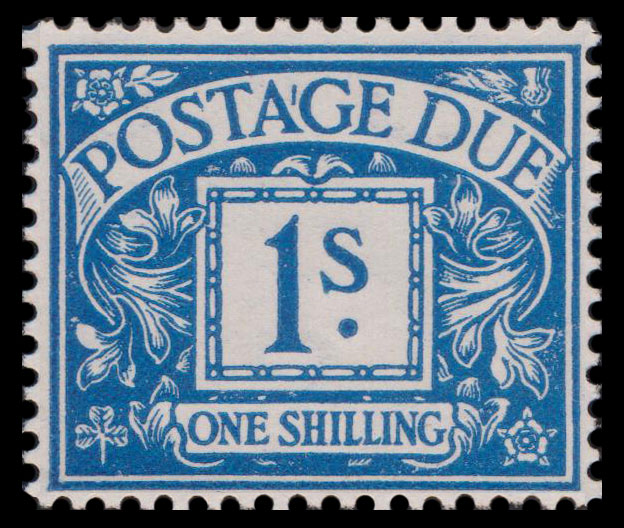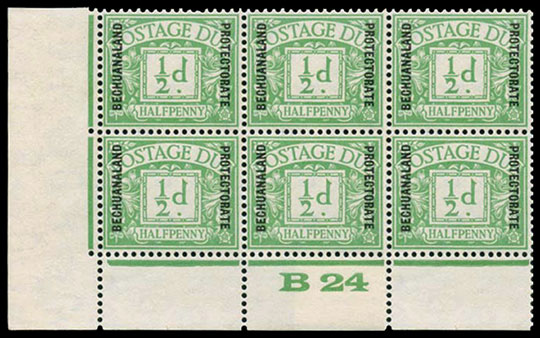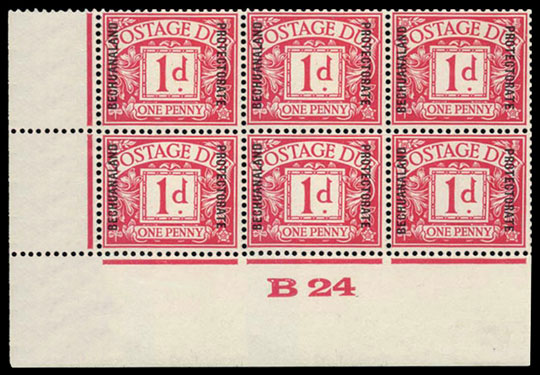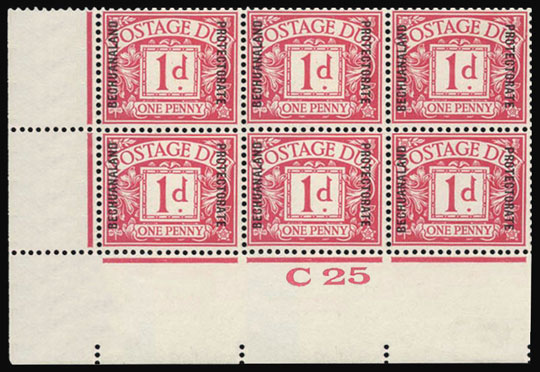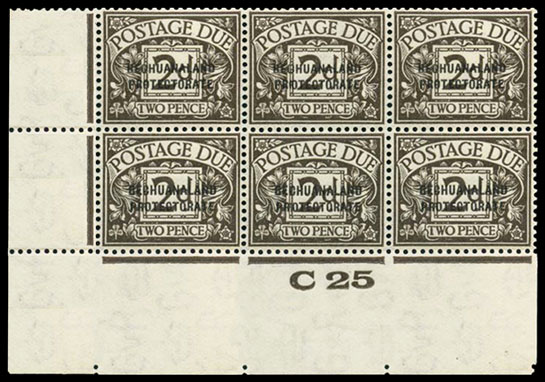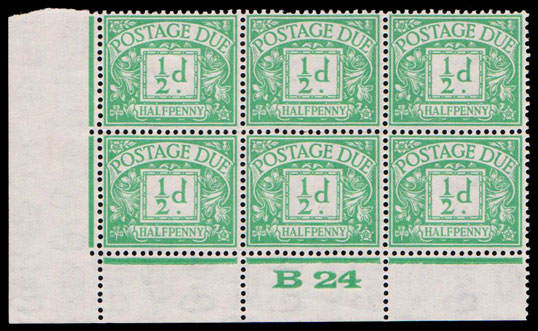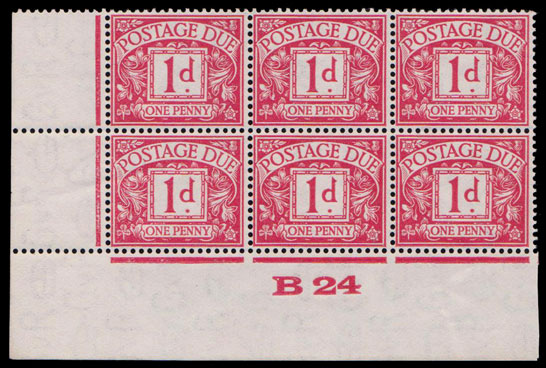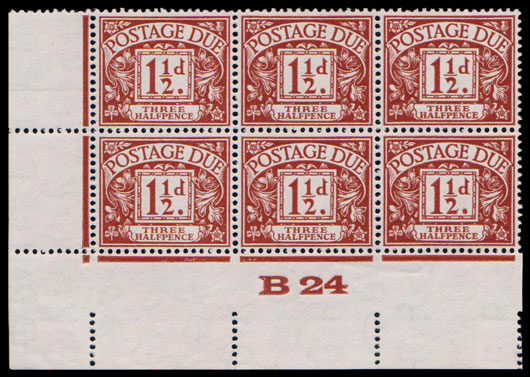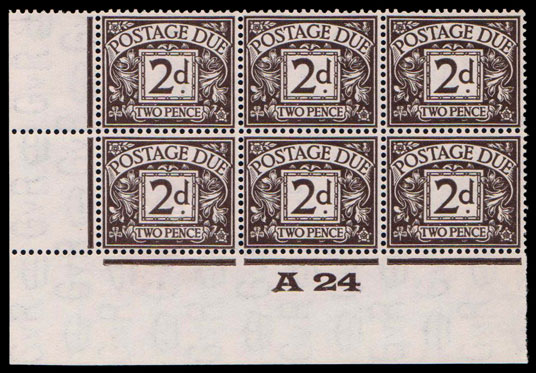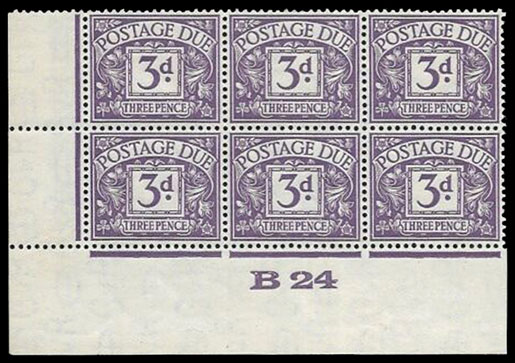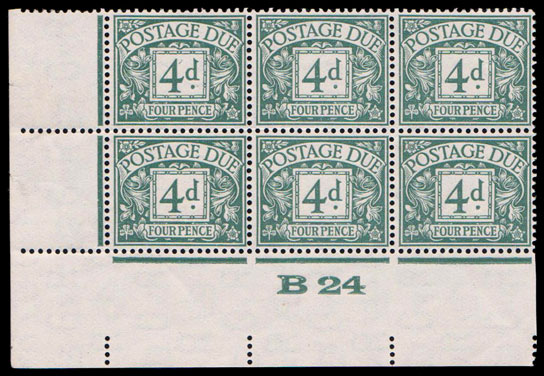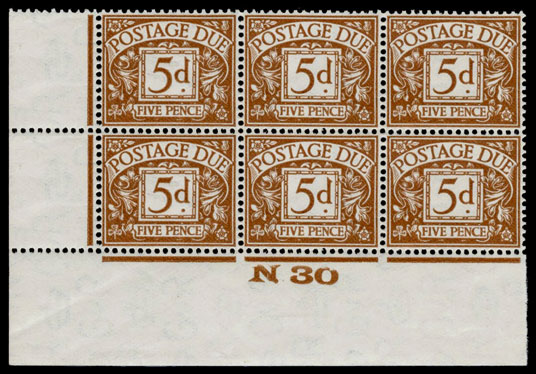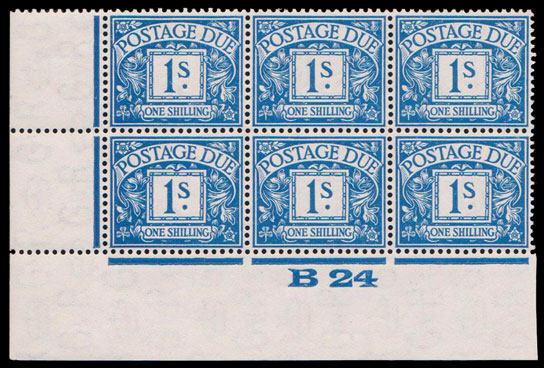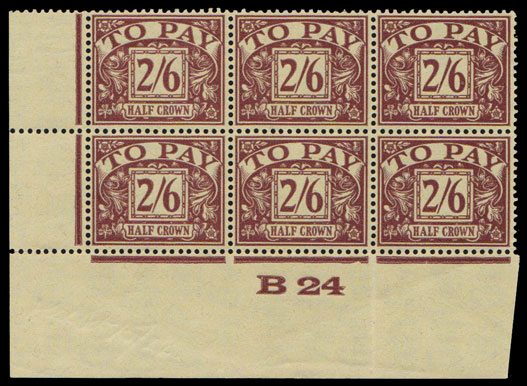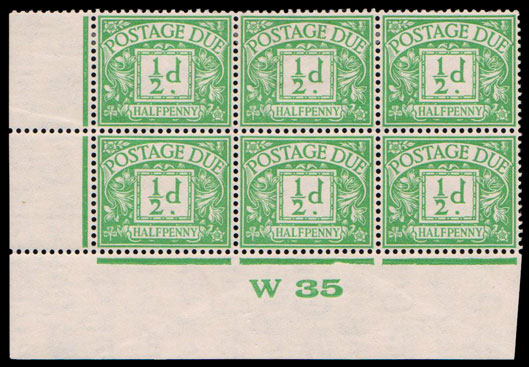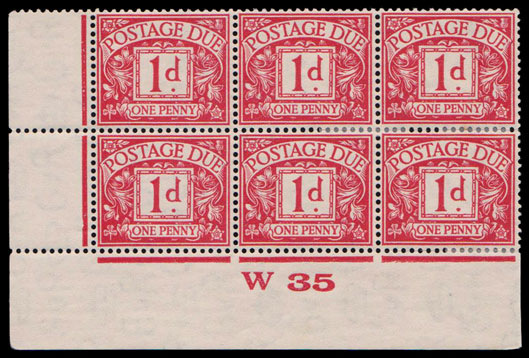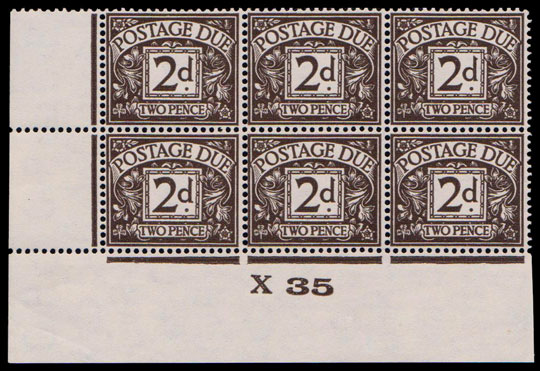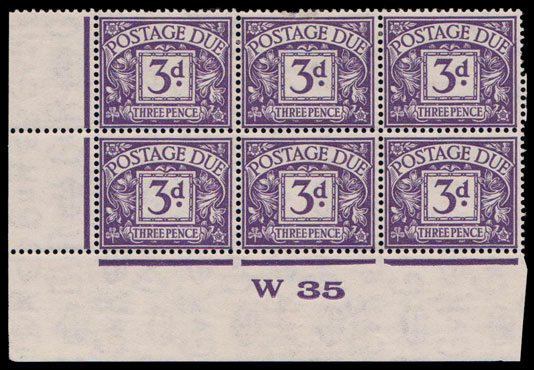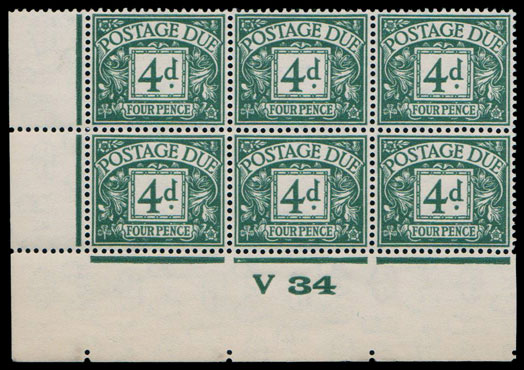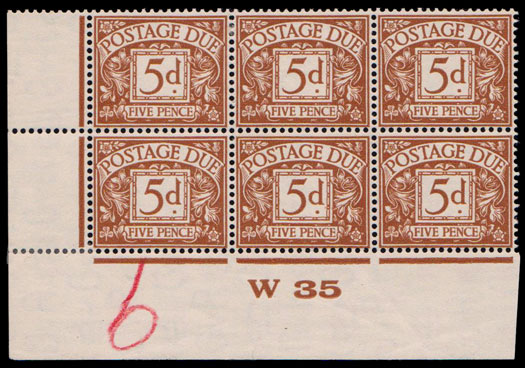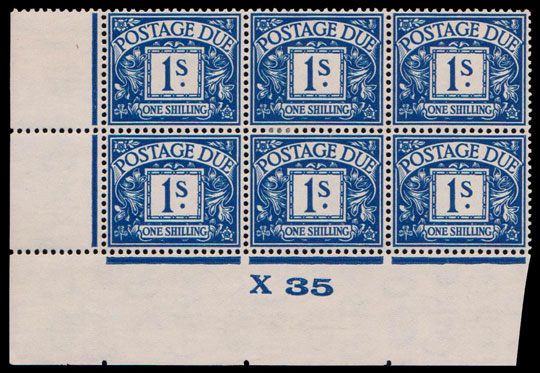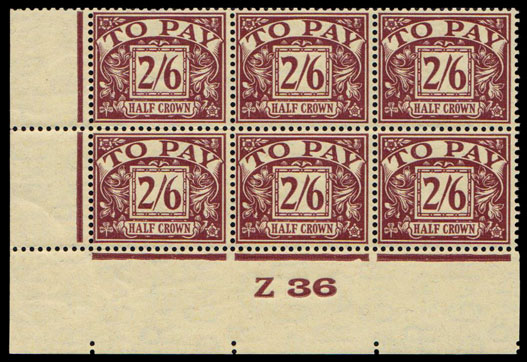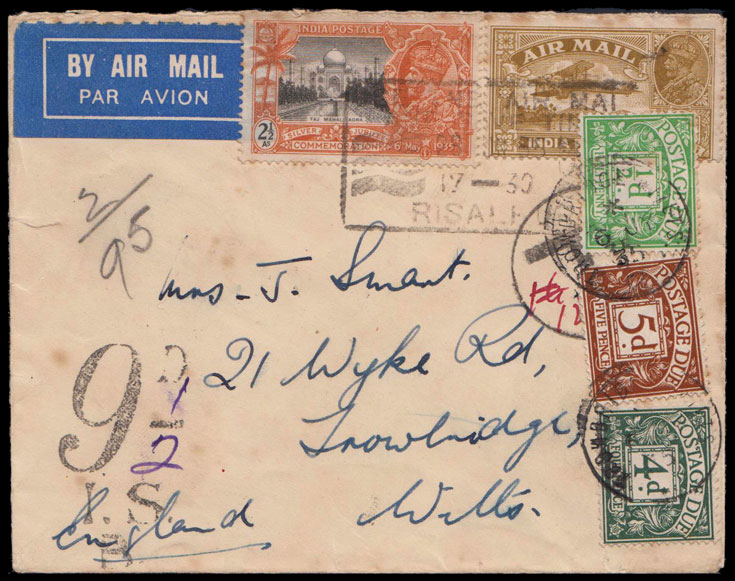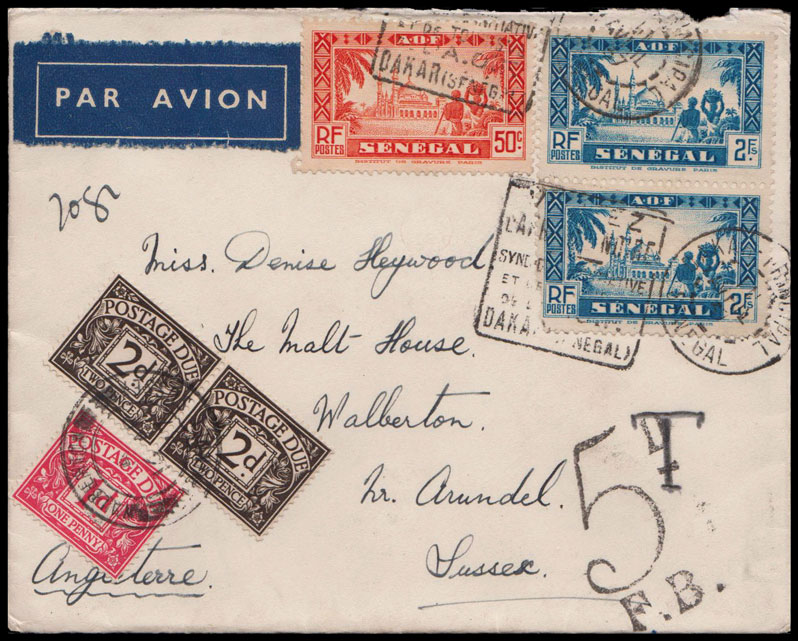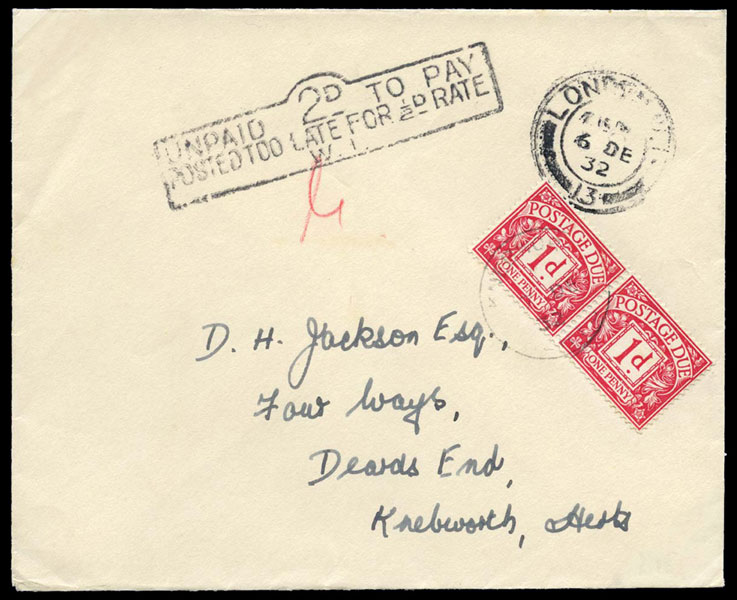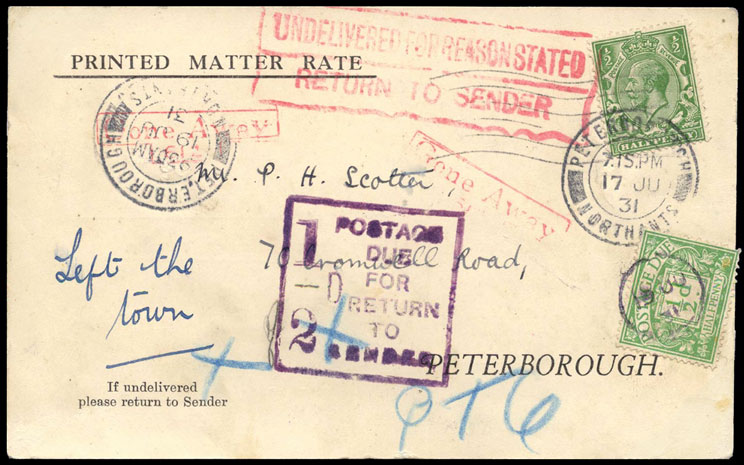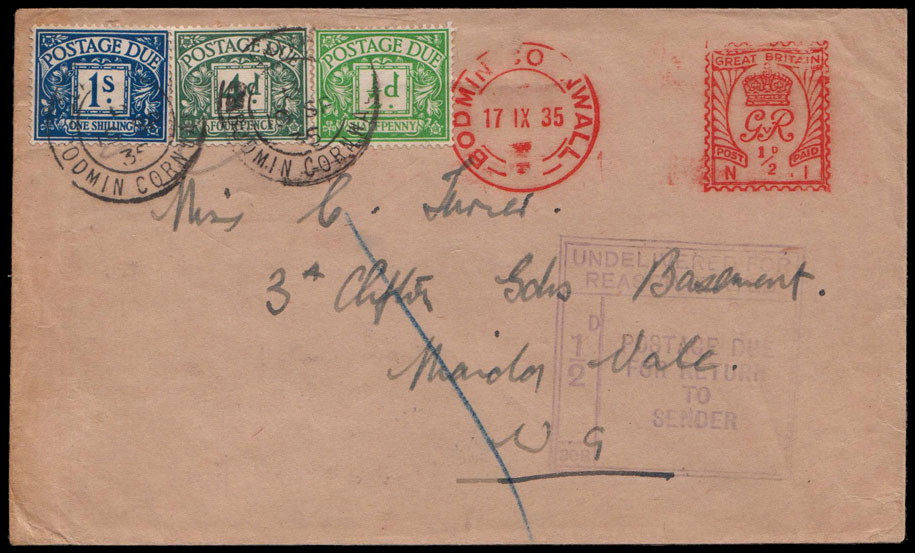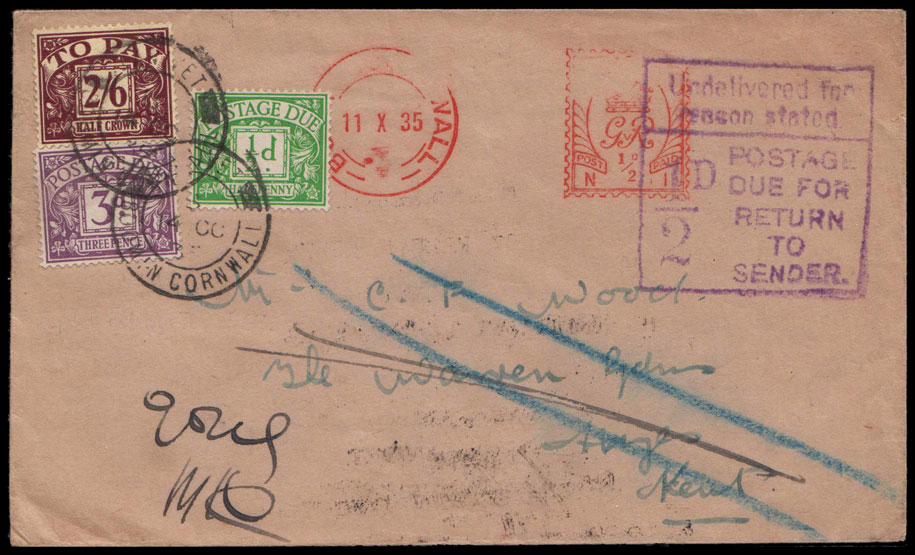
The printing contract changed from Harrison & Sons to Waterlow & Sons in 1924. At the same time, the watermark was changed from Simple Cypher to Block Cypher, although Waterlow initially printed some 1d postage dues on thick chalk-surfaced paper with watermark simple cypher, thought to be left-over stock. Thereafter, all values were printed by Waterlow on block cypher, including the 1s, which had previously been printed by Somerset House, and with the addition of a 2/6 “To Pay” label in Oct 1924, which was needed for the collection of Customs Dues in addition to Postage Dues. The contract reverted to Harrison in 1934. Again, the printings can only be distinguished when they have control letters attached.
Postage Dues were printed in letterpress on sheet-fed machines, giving the possibility of inverted watermarks.
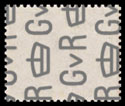
Sideways
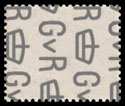
Sideways-inverted
Watermarks shown as seen from the front of the stamp.
| ½d | Emerald | June 1925 |
| 1d | Carmine | Apr 1925 |
| 1½d | Chestnut | Oct 1924 |
| 2d | Agate | July 1924 |
| 3d | Dull Violet | Oct 1924 |
| 4d | Dull Grey-green | Oct 1924 |
| 5d | Brownish Cinnamon | Jan 1931 |
| 1s | Deep Blue | Sept 1924 |
| 2/6 | Purple/Yellow | Oct 1924 |
All except the 5d are known sideways-inverted.
Specimens
Stamps were overprinted “Specimen” or “Cancelled” for a variety of reasons including reference copies, trial printings, and colour standards. Most Block Cypher examples are scarce, some with only a single copy recorded.
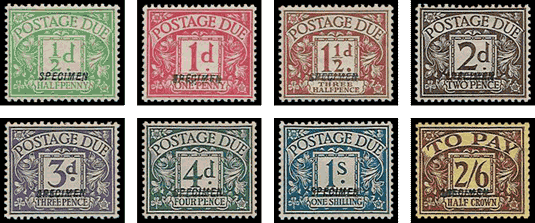
Overprinted “Specimen” Type 23, ex Marcus Samuel.

Overprinted “Specimen” Type 26.

Overprinted “Specimen” Type 30, removed from the “Day Books”, likely unique.
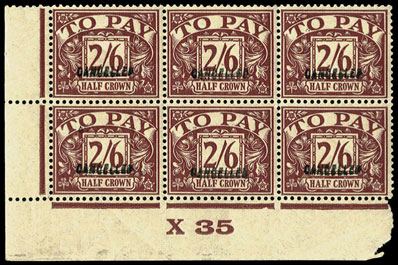
Overprinted “Cancelled” Type 28.
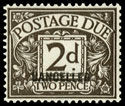
Overprinted “Cancelled” Type 33.
Varieties
Click the image to enlarge.
Apostrophe Between A&G, plate 31/4 row 12/1.
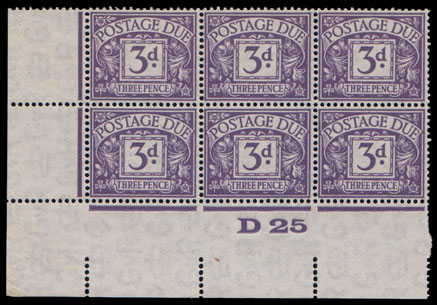
Experimental paper with a dense Block Cypher watermark.
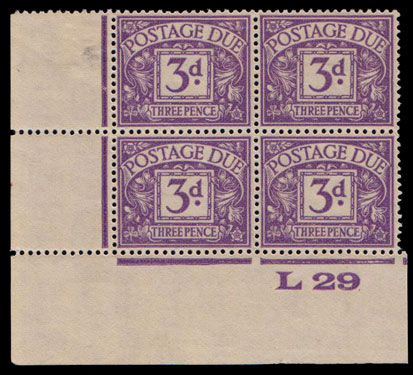
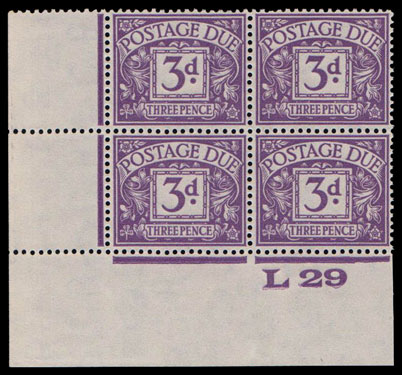
The unique L29 control block printed on the gummed side, with matching normal block. Originally acquired by Chas Nissen as a block of 142 stamps, but a large number were badly creased and were destroyed.
The 1d is known bisected at: Ashton under Lyne (1932); Hastings (1930); Penryn, Cornwall (1928); Shenfield (1926); Wimbledon, London SW (1925).
The 2d is known bisected at: Perranwell Station (1932).
Overprints
Jan 1926, overprinted “Bechuanaland Protectorate” (now Botswana). The ½d and 2d were Block Cypher (½d sideways-inverted), the 1d was Simple Cypher on thick chalk-surfaced paper (B24 & C25).
Click the images to enlarge.
Control Blocks
Waterlow Printings
Click the images to enlarge.
The 1½d Chestnut was withdrawn after a single B24 printing.
| ½d | 1d | 2d | 3d | 4d | 5d | 1s | 2/6 | |
| A24 | I | I | I | |||||
| B24 | P | I | I | I | I | I | ||
| C25 | I | I | ||||||
| D25 | I | |||||||
| E26 | I | I | I | P | ||||
| F26 | I | I P | I | I | I | I | ||
| G27 | I | I | ||||||
| H27 | I | P | I | |||||
| I28 | I | I | I | I | P | I | I | |
| J28 |
| ½d | 1d | 2d | 3d | 4d | 5d | 1s | 2/6 | |
| K29 | P | I P | I | I | I | I | I P | |
| L29 | I | I | I | I | I | I | ||
| M30 | I | I | I | |||||
| N30 | I | I | I | I | I | |||
| O31 | I | I | I | I | I | I | I | |
| P31 | I | I | ||||||
| Q32 | I | I | I | I | I | I | I | I |
| R32 | I | I | I | I | I | |||
| S33 | I | I P | I | I | I | |||
| T33 | I | I | I |
I: Imperforate P: Perforated bottom margin
Harrison Printings
Click the images to enlarge.
The 1½d Chestnut was withdrawn in 1925; hence, no Harrison printings.
| ½d | 1d | 2d | 3d | 4d | 5d | 1s | 2/6 | |
| U34 | I | I P | I | I | I | |||
| V34 | I | I | I | |||||
| W35 | I | I | I | I | I | |||
| X35 | I | I | I | I | ||||
| Y36 | I | I P | I | I P | ||||
| Z36 | I |
I: Imperforate P: Perforated bottom margin
Covers
Click the images to enlarge.
The last two covers were from bundles of undeliverable mail which were returned to St Benet’s Abbey in Cornwall, and charged ½d postage due per cover, for 33 covers in the first bundle and 67 in the second.
